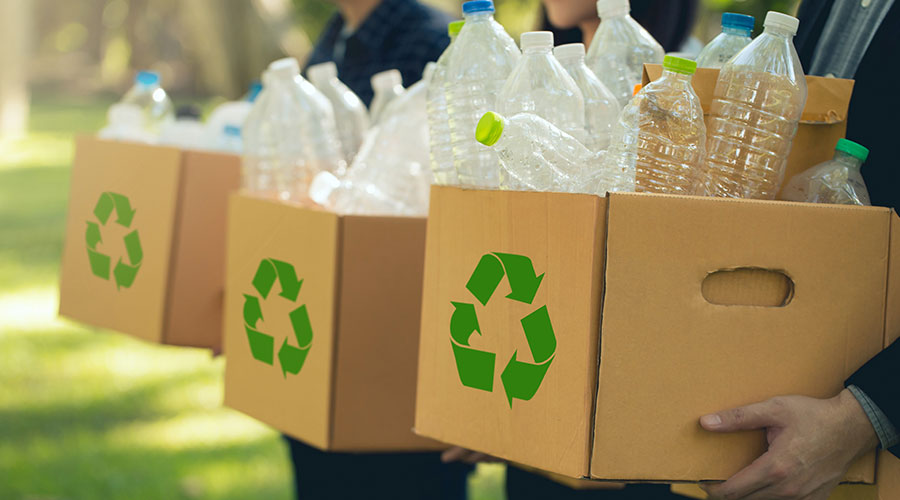Environmental Declarations Help Facility Managers Make Informed Decisions
Some interior products manufacturers have started creating "nutrition labels" for their products to give end users a clear idea of what went into it. Though not as quick to scan as the little box on the side of a yogurt cup, the EPD is a third-party verified document that includes information like a product's ingredients and where they came from, how the product was made, how to maintain it and what the life-cycle assessment results are. The information can be specific — such as how much of the embodied energy over the life of the product comes from what types of energy sources.
Using life-cycle assessment to create an EPD is not a new concept, but this year O'Connor expects it will get a major boost from the new LEED system due out in November. LEED 2012 will include credits in Materials and Resources for choosing providers that have done a life-cycle assessment of their products and have published an EPD, says O'Connor.
For the average facility manager, there might be a little bit of a learning curve. "All that stuff that they have a high level understanding of, but now they're actually going to have to start looking at the data," she says. A product's potential for air acidification, eutrophication, global warming, ozone depletion, and smog formation are all quantified. "These are some big science concepts for someone who just wants to put in a nice interior finish," says O'Connor.
Hogueisson is not too concerned about the learning curve though. "It's like when they changed the cereal boxes," she says. "Nobody looked at it before and now we're looking at what each of those lines says."
Another concept that is perhaps more readily accessible than "eutrophication" is the longevity of a product. "One piece of sustainability is how is this product manufactured and what is its impact on the environment," says Woolum. "The bigger piece of sustainability is what is this decision's relationship to time?" He has seen facility managers buying more into the idea of doing more with less and making interiors decisions that will last five, 10, or 20 years.
That longevity is something Peter Strazdas, associate vice president of facilities management at Western Michigan University, thinks a lot about in his interiors considerations. For example, for the new $68 million College of Education building, they decided to put in as much terrazzo as possible. "We have buildings that are being renewed after 40 years with terrazzo floors that just needed a polish," he says. When the new education building is renewed in 30 years he wants the facility manager to say, "What a good decision they made in 2012."
As all new construction on campus has to achieve LEED-NC Silver, Strazdas says he could just go down the list, specifying products that would garner the most points. But just focusing on LEED certification is not his goal. "It's about the application and balancing the project budget with long term operating and maintenance costs," he says.
Life-cycle is still one of the new frontiers for facility managers, Strazdas says. "Facility managers need to be thinking long-term and should be forcing others that are holding the purse strings to make smarter decisions up front," he says. "Some people are still stuck in that 'I can only think about today and maybe the next three years,' and that short term thinking does not serve an owner well."
Green Interiors in Leased Space
Edelman, a public relations firm, does not own space. With offices holding as few as 24 people to as many as 800 people, the sustainability strategies available to Alice Hogueisson, senior vice president, U.S. director of facilities, global environmental manager, can sometimes be limited to what the landlord is willing to do. But there's still plenty she can impact in her own space.
Though no spaces have been certified, any build-outs or renovations follow LEED. Almost all offices have green teams in place. Offices track carbon footprint and report it internally. Instead of bottled water, they use filtered water pitchers. A new furniture manufacturer was selected in part due to its sustainability efforts. Working with the office supplies provider, they now source 30 to 40 percent of materials with green products. "We wanted to do something we could control," Hogueisson says. She credits partnerships with suppliers to help "work through the haze."
"We're looking at who we're buying from, do they have a good sustainability story and can they help us with our sustainable story," she says.
— Naomi Millán, senior editor
|
Related Topics:













